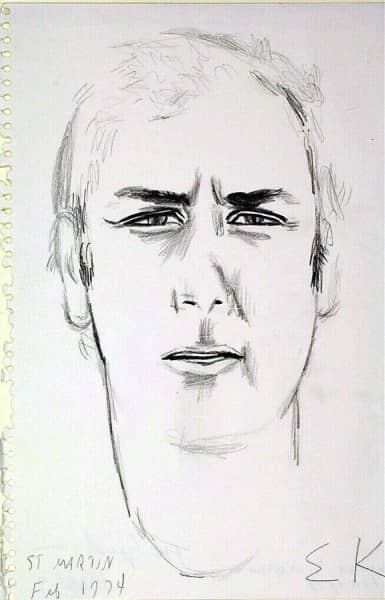 Artists & Collectors
Artists & Collectors
Geertjan Visser was born in Papendrecht in 1931.
His father Arie Visser and his mother Ottolina Dicke formed together a family of seven children. The parental home in Papendrecht turns out to be a good nest for the arts, containing furniture by Berlage and loads of art books. For them, a visit to a museum was a given.
Geertjan, Martin (°1922) and Carel (°1928) each opt for an education in the line of their father, who, as a civil engineer, headed the family business, the "Visser en Smit" contracting firm. Carel starts studying architecture but soon goes to the Royal Academy in The Hague. Martin graduated as an architectural draftsman but soon shifted his interest to furniture design. Geertjan is the only one who completely follows in his father's footsteps. Trained as a civil engineer, he works in the family business.
The love for art and culture was instilled in the family at an early age. Brother Carel becomes a famous sculptor. Geertjan, sister Adri and Martin grow into collectors of contemporary art. Art collectors almost always operate within a community of like-minded people: family, friends, artists, art dealers, museum people and other collectors. They often seek consultation and advice in order to formulate an opinion that will lead to a choice. This process of consultation and deliberation is embedded in the Visser collection, each with its own character.
In 1946, when he was fifteen years old, Geertjan Visser bought a work by Karel Appel. That was buying, not collecting, he believes, and it happened based on the example of his brother and sister-in-law Martin and Mia Visser, who were then collecting work from the Cobra group. It only became conscious collecting in 1961 with the first acquisition of works by Manzoni and Christo (a packed pram).

During the intervening fifteen years, Geertjan Visser has lived abroad almost continuously, especially in Switzerland, where he studied engineering in Zurich. There in Zurich, a chance encounter led to a friendship that allowed him to experience first-hand the early development of an important and later very famous artist. In 1953, while sitting on a café terrace, he noticed that a man was drawing a portrait of him at a nearby table. Contact is made and the other person turns out to be the then relatively unknown American painter Ellsworth Kelly. They kept in touch for life.
Geertjan Visser is a special collector who, after thoroughly studying a tempting reproduction of a painting by Picabia in an auction catalogue, has no problem purchasing the work in question on the phone, then, despite the fact that the confrontation with the original only increases his passion for it, immediately lends it to a museum. With this approach he shows some classic characteristics of the collector.
The hunt for the work of art and its capture are the essence of collecting; once that process is complete, the tension fades away somewhat. The pride about the conquest continues and is turned to public benefit by further sharing the work of art with the visitors of the museum.
From the 1970s onwards, the Kröller-Müller Museum acquired more than 400 works of art by 42 artists from the private collection of Martin, Mia and Geertjan Visser.
Fifteen years after the start of the collaboration, concrete agreements are made between Rijksmuseum Kröller-Müller and the Vissers. They conclude a 'package deal' under which more than 600 works of art will be transferred in annual installments between 1987 and 1993, partly as a purchase and partly as a donation. In many cases the works are accompanied by personal documentation and letters, which record the origins of the collection and thus make the relationship between collector and artists visible. The works acquired by Kröller-Müller are mentioned at the request of Martin and Geertjan Visser as 'formerly Visser collection'.
Martin and Geertjan Visser have also been explicitly and fundamentally concerned with architecture. Martin and his first wife Mia commissioned Rietveld to build them a house which received later a significant extension designed by Aldo van Eyck. Geertjan Visser also asked architect Aldo Van Eyck to design a holiday home in a wooded area in Retie, the "Noorder Kempen". At that time, Visser still lived in an apartment building in Antwerp. The result is a house based on an octagon as a module, which was built in 1974 and completed in 1976. GeertjanVisser later lived permanently in the house in Retie until his death in 2010.